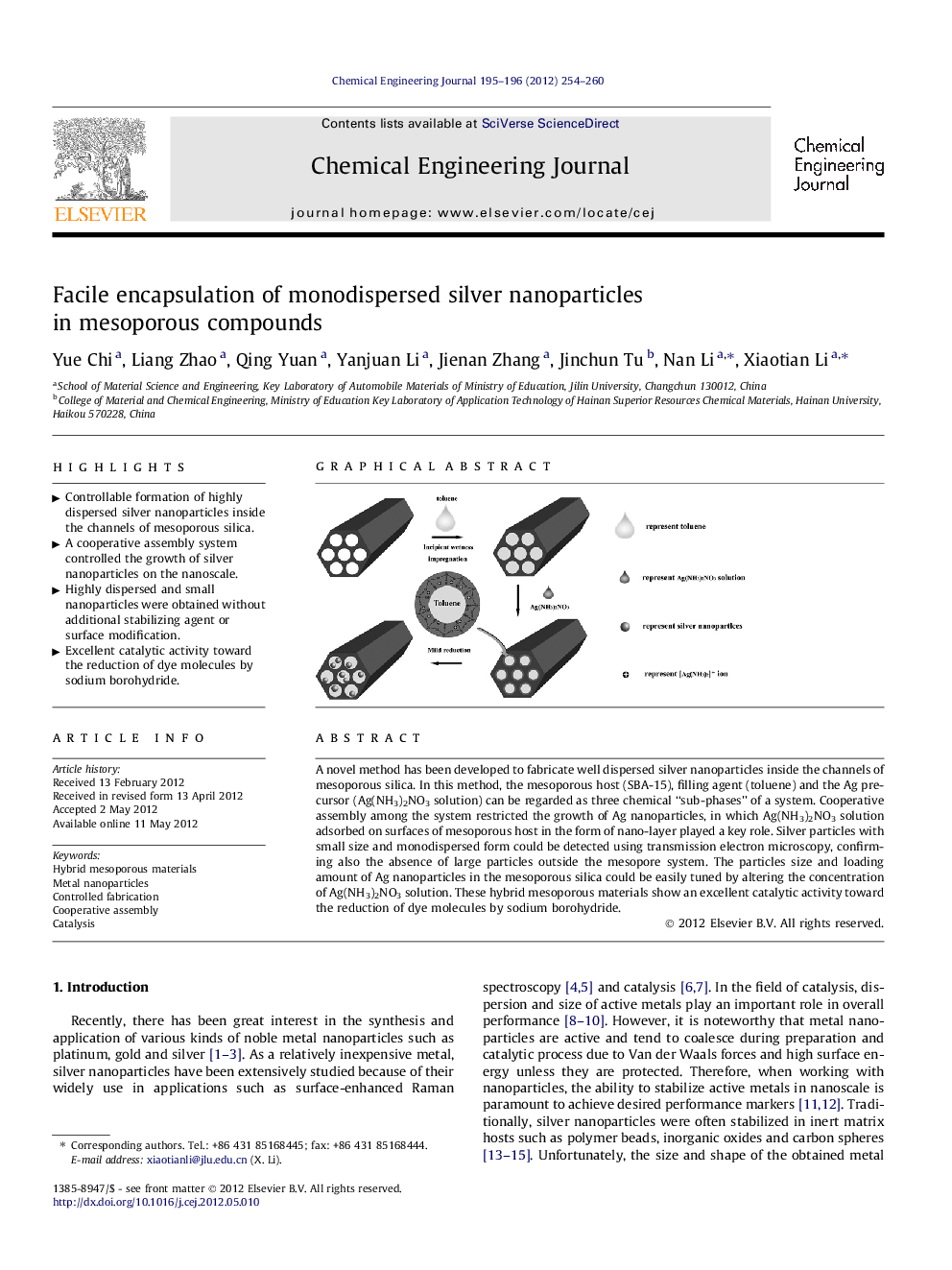| Article ID | Journal | Published Year | Pages | File Type |
|---|---|---|---|---|
| 149776 | Chemical Engineering Journal | 2012 | 7 Pages |
A novel method has been developed to fabricate well dispersed silver nanoparticles inside the channels of mesoporous silica. In this method, the mesoporous host (SBA-15), filling agent (toluene) and the Ag precursor (Ag(NH3)2NO3 solution) can be regarded as three chemical “sub-phases” of a system. Cooperative assembly among the system restricted the growth of Ag nanoparticles, in which Ag(NH3)2NO3 solution adsorbed on surfaces of mesoporous host in the form of nano-layer played a key role. Silver particles with small size and monodispersed form could be detected using transmission electron microscopy, confirming also the absence of large particles outside the mesopore system. The particles size and loading amount of Ag nanoparticles in the mesoporous silica could be easily tuned by altering the concentration of Ag(NH3)2NO3 solution. These hybrid mesoporous materials show an excellent catalytic activity toward the reduction of dye molecules by sodium borohydride.
Graphical abstractFigure optionsDownload full-size imageDownload as PowerPoint slideHighlights► Controllable formation of highly dispersed silver nanoparticles inside the channels of mesoporous silica. ► A cooperative assembly system controlled the growth of silver nanoparticles on the nanoscale. ► Highly dispersed and small nanoparticles were obtained without additional stabilizing agent or surface modification. ► Excellent catalytic activity toward the reduction of dye molecules by sodium borohydride.
